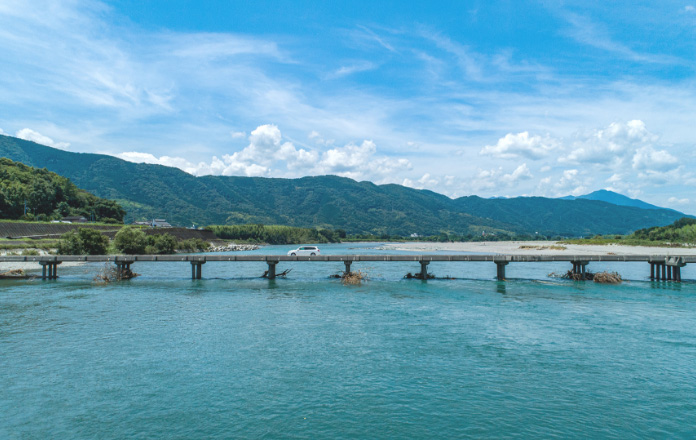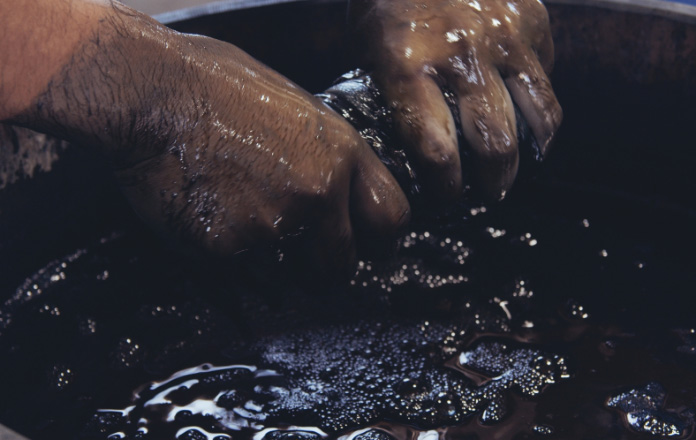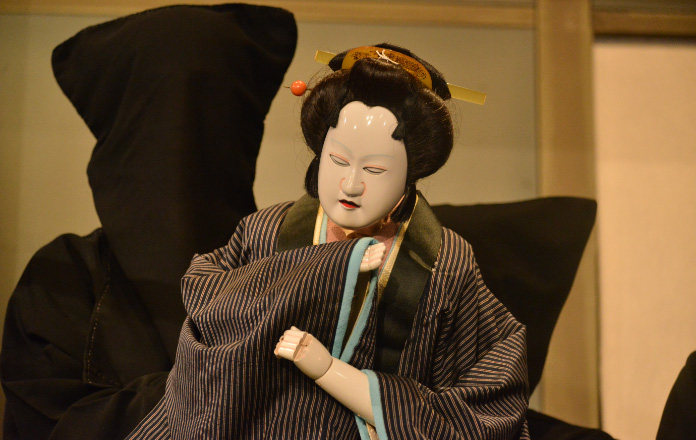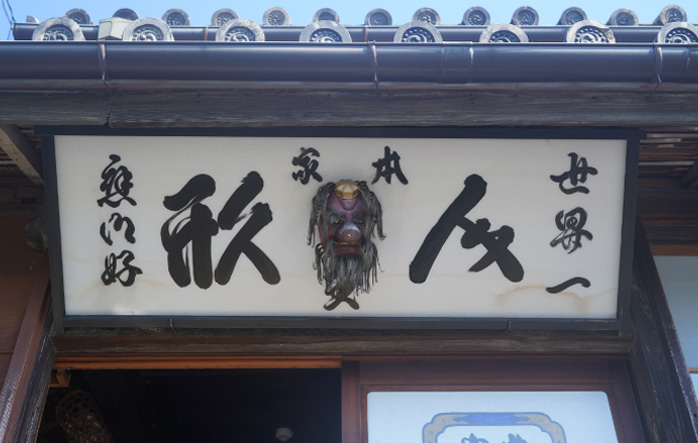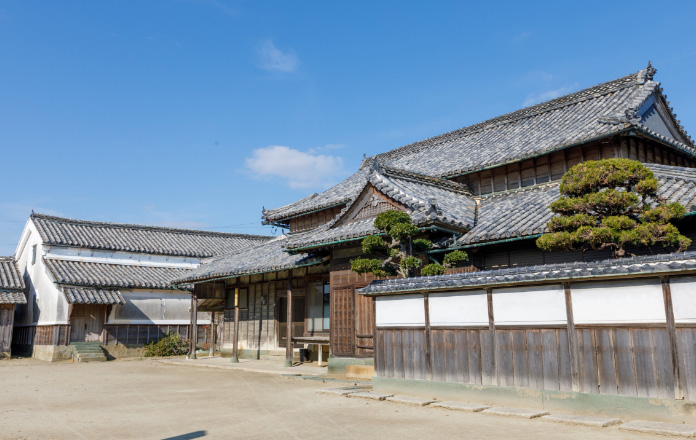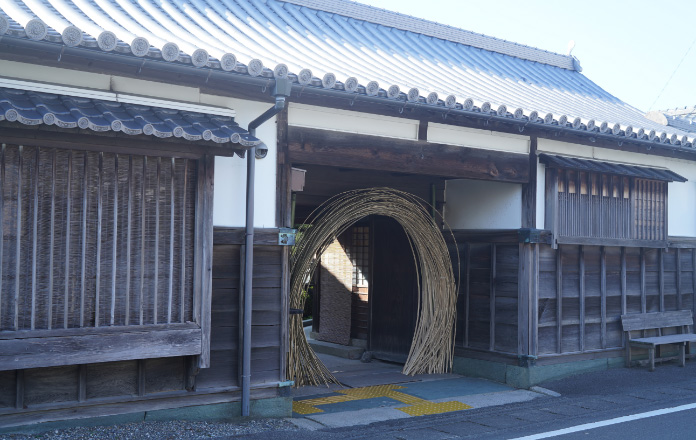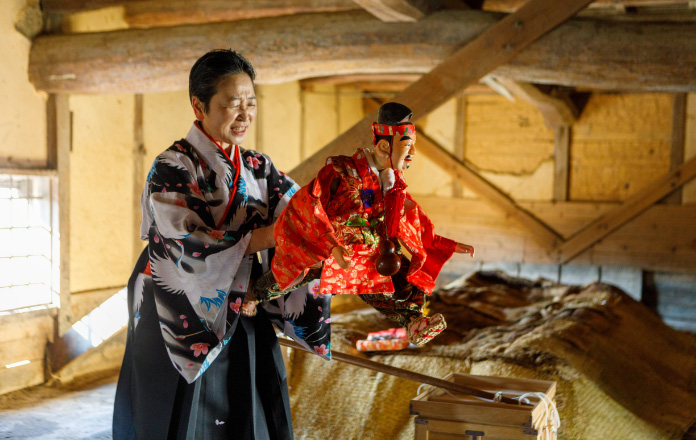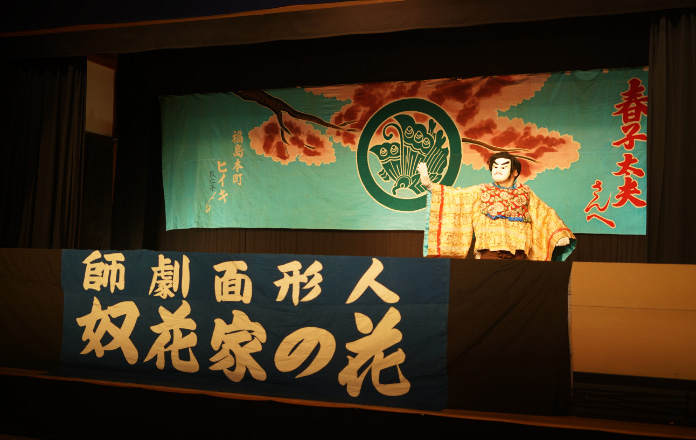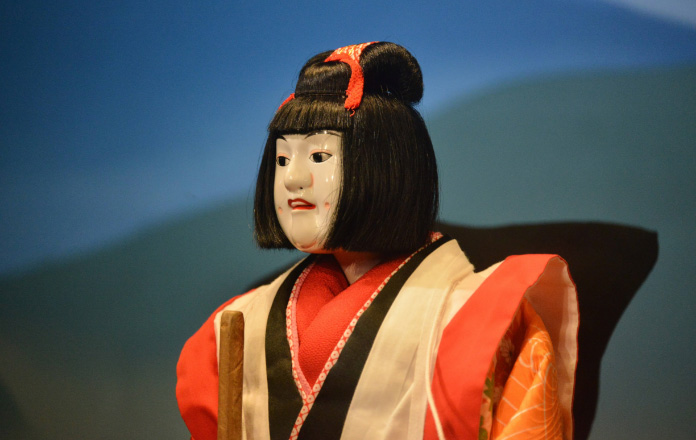NOBODY KNOWS
Online Video / Event Screening
TOKUSHIMA
Online Video / Event Screening
A Special video of Tokushim’s performing arts
“Puppet Maker Tenguhisa ~ Itinerant puppeteers, masked theater, and traditional puppet entertainers”
TOKUSHIMA
Concerning the Japan Heritage, Awa - The Birthplace of “Japan Blue”, a video focusing on a puppet maker, Tenguhisa and the performing arts of Awa (historical name of Tokushima) is produced. We will deliver a special video that conveys the puppet culture unique to Tokushima that blossomed through the prosperity of indigo trading and the soul of the creator who supported the culture behind it.
Online Video
- Date
- 5th March(Sat)2022 to Streaming Now! *English subtitles will be added in April 2022
- Fee
- Free
- Channel
- https://www.youtube.com/c/NOBODYKNOWS-tours
#TOKUSHIMA NEW NORMAL FILM FESTIVAL
- Date
- 5th March(Sat)2022 11:00
- Detail
- TOKUSHIMA NEW NORMAL FILM FESTIVAL
- Performers
-
Tenguhisa:Maro Akaji
Narration:Takaizumi Atsuko
Awadeko Hakomawashi Preservation Society:Nakauchi Masako,Minami Kimiyo
Awa Ningyo Joruri:Katsuuraza
Masked theater:Fujima Naozo
Tayu:Takemoto Tomowaka,Takemoto Tomohiro
Shamisen:Tsuruzawa Tomoyu,Tsuruzawa Tomosuke - Video director
- Tsugaoka Keitaro
- Scenario
- Suzuki Eiichi
- Composition
- Hanayagi Genkuro
- Music
- Takehana Kanako
puppet maker, Tenguhisa and the performing arts of Awa.
The Yoshino River, which flows from east to west through Tokushima, is known as a "ramp river" that floods every year, but in return, it has continued to carry fertile mountain soil to the land of Awa. The soil cultivated high-quality Awa Ai (indigo) and swept the national market during the Edo period. Tokushima will eventually develop into a "gei-dokoro" (arts place) where Ningyo Joruri (Japanese puppet theater) and Awa Odori (dance) are flourishing, against the backdrop of the economic power of Awa Ai and exchanges with various parts of the country. The culture nurtured with the indigo houses that remain in various places is certified as a Japan Heritage, Awa - The Birthplace of “Japan Blue”.
Ningyo Joruri, which is said to have been born in Awaji at the end of the 16th century, was protected and encouraged by the Awa lord who added Awaji in 1615, and spread to Tokushima. In the Yoshino River basin, with the backing of the Tokushima feudal lord and indigo merchants, the Awaji Puppet Theater frequently performs on the temporary stage of the hut, and soon spreads to the mountainous areas in the south of the prefecture. There, the villagers paid for each other to build a stage in the shrine precincts, create a puppet theater, and dedicate Ningyo Joruri to the guardian deity at the spring and autumn festivals. It is said that there were more than 70 puppet theaters in Tokushima prefecture during the Meiji era, and there are still many enthusiast groups, and they are regularly performed at rural stages and Awa Jurobe Yoshiki (Puppet Theater and Museum).
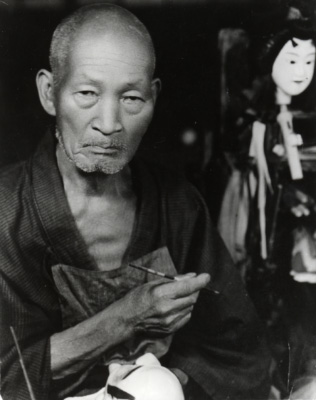 Founder・Tenguhisa
Founder・Tenguhisa
The most important puppet maker for Ningyo Joruri is the first Tenguhiisa (Yoshiokaya Hisakichi). In the 20s of the Meiji era (1887-1896), he devised a head that shines on the stage, such as enlarging the head of a puppet and adopting glass eyes, and it is said that he worked on more than 1,000 heads throughout his 86 years of death in 1943. He also worked on the heads used in Bunraku and Awa Ningyo Joruri, the heads of Hakomawashi (performing on the roadside), and the masks for the request of Hananoya Hanayakko.
This time, from "Tenguya Hisakichi" recorded in the writer Uno Chiyo's "Uno Chiyo Collection", Uno met a doll of Tenguhisa and made a movie based on the story she wrote by visiting his studio. Maro Akaji, an actor and dancer who presides over Dairakudakan, plays Tenguhisa, and captures the life as a craftsman and the rich performing arts unique to Tokushima with using the puppets and masks produced by Tenguhisa.
Tenguhisa Museum in Tokushima city
Tenguhisa, a puppet maker who was active during the three eras of the Meiji, Taisho, and Showa eras. The
Tenguhisa Museum reproduces the state of the workshop around 1935, when the first and third generation
Tenguhisa worked side by side. In 2002, the puppet making tools and products used by the 3rd generation of
Tenguhisa were designated as important tangible folk cultural properties of the country, and these materials
are also exhibited in the museum.
https://www.awanavi.jp/spot/20315.html
Ai-yashiki Takechi Family Residence in Ishii Town
An Ai-yashiki (a mansion making indigo) built in the plain on the south bank of the Yoshino River. The
Takechi family has been manufacturing and selling indigo dyes since 1726, when the local peasant Motobei
separated from the family. The current mansion is said to have been completed in 25 years from Kaei 4 (1851)
to Meiji 9 (1876). Inside of a pile of blue stones from Tokushima prefecture, the layout on the premises is
unique, a hut that ferments indigo and a storehouse surrounding the magnificent main building. It shows the
financial strength of the indigo merchants of the past. Nationally designated important cultural
property.
https://www.smartguide.name/ainofurusato-awa/guide/guide_detail.cfm?voice_data_id=2
Tokushima Prefectural Awa Jurobe Yashiki (Puppet Theater and Museum) in Tokushima city
Awa Jurobe Yashiki is a place related to Ningyo Joruri "Keisei Awa no Naruto", that was written based on a
historical event in Awa (old name for Tokushima). This joruri (dramatic recitation accompanied by shamisen)
depicts a family trouble of a feudal lord in Awa-han (Tokushima clan) in the Edo period. Awa Jurobe Yashiki
is the site that appears in the play. The nationally designated important intangible folk cultural property
"Awa Ningyo Joruri" is performed every day, including "Keisei Awa no Naruto", and materials related to Awa
Ningyo Joruri are also exhibited.
https://joruri.info/jurobe/english/
FOLK PERFORMANCE
Awadeko Hakomawashi Preservation Society
"Hakomawashi", in which two or three people pair up and recite joruri (Japanese ballad drama) while
manipulating several wooden puppets, reached its golden age from the end of the Tokugawa shogunate to the
Meiji era. Street performances of Hakomawashi were seen all over the country, but eventually disappeared
from the street corner in the early Showa era. On the other hand, "Sanbasou mawashi" of the blessing art
which uses the same tool is handed down in some provinces, and the Awadeko Hakomawashi Preservation Society
has handed down now.
The society was established in 1995 for the purpose of researching intangible folk cultural properties such
as Awa wooden doll’s "Hakomawash" and "Sanbasou mawashi", and other Tokushima Prefecture's unique blessing
arts and Kadozuke (performances in front of the gate of houses). Became an apprentice to the "Sanbasou
mawashi" entertainer in Higashi-Miyoshi town and accompanied to Kadozuke at the New Year's Day for three
years to learn the technique. Since 2002, inherited the clients and continued Kadozuke in Tokushima
Prefecture. It is the only entertainment group in Japan that hands down "Hako mawashi", "Ebisu Mawashi",
"Daikoku Mawashi", etc. Performs traditional puppet theater performances in Japan and overseas. Has received
the Tokushima Shimbun Award for Culture, the UNESCO ACCU Award, and the Awa Cultural Creation Award, etc.
Masked Theater
From the Edo era to the early Showa era, another art form was produced in which a person dons a mask to
perform instead of a puppet all over the country. In Tokushima, there is a style of masked theater in which
everything is performed by a single actor from the Meiji era to the end of the Taisho era. It is an art form
created by Hananoya Hanayakko, who was born into a family of indigo dyers in Ishii Town and became a kabuki
actor, but later created this singular art.
Hananoya Hanayakko started a masked theater tour using his own masks made by Tenguhisa. The masks used by
Hanayakko are designated as a tangible folk cultural property in Ishii Town. In this video, a part of the
one-generation masked theater "Oshu Adachigahara" was revived and performed using valuable cultural assets.
Awa Ningyo Joruri Katsuuraza
In Tokushima, since the Edo period, the puppet theaters of Awaji had put up a tent and run a play in the
indigo-producing area of the Yoshino River basin. In the basins of the Katsuura River, Naka River, and Kaifu
River in the southern part of the prefecture, performances have been frequently held on permanent rural
stages built in the precincts of shrines. Due to outdoor performance, lead by the doll master Tengu Hisa,
performers started using dolls covered with shiny paint which were much bigger than the ones used in
Bunraku. Puppet theaters in various places are still maintained by many enthusiasts up to today.
Katsuuraza is a puppet troupe founded during the Kansei period of the Edo era by young people as "Kunimura
Hisatayuza" under the name of Hisakuni Village at that time. Once the performance had stopped due to The
Great Famine of Tenpo (1833-39), it was restored in the early Meiji era. However, in 1931 the head of the
troupe and tools of the performance were burned down by a fire on the rural stage, and it was again in a
dormant state. In 1946, the troupe bought a set of tools from a puppet troupe in Yoshii (now Yoshii-cho,
Anan City) and was restored as the current "Katsuuraza". In addition to performing in Japan and overseas,
the troupe also instructs local elementary and junior high school students and focuses on fostering
successors.
PERFORMERS
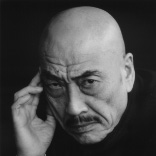
Maro Akaji
Born in 1943 in Nara prefecture. In 1965, participated in the theatrical company “Situation Theater” by Kara Juro. As an actor embodying Kara’s “The body theory of the privileged,” caused a big revolution in the theatrical world of the 1960s and 70s, having a big influence to the world. In 1966, while working as an actor, studied under Hijikata Tatsumi, the founder of the Butoh. In 1972, he launched the Dairakudakan and introduced a style with a strong overwhelming spectacle that uses large devices for Butoh. This style, named "Tenputenshiki" (being born into this world itself is a great talent), became a big topic both in Japan and abroad, and "Butoh" penetrated the world. Focuses on the release of new works and the development of Butoh dancers. Has established a pioneering position across genres, with a unique presence in movies, TV, and stage.
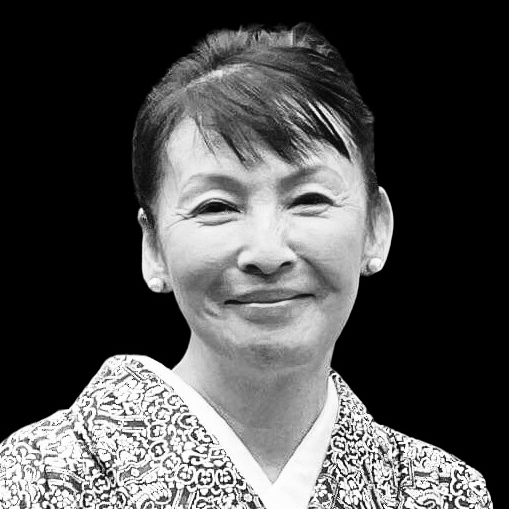
Takaizumi Atsuko
Started acting at Waseda University Theater Research Group. After graduating, started the theater company "Yu◉ Machine / Fully Automatic Theater" in 1983. As an actor, played a variety of roles, from boys and girls to old people, and gained popularity. In 2004, won world acclaim for performances of “Elephant Vanish,” a theatrical play of Murakami Haruki’s short stories, in New York, Paris, and London. She works on scripts as well, and in "A La Carte", a work which incorporated jazz into the theater, is a great long run that has been played for more than 30 years, winning the Sponici Art Excellence Award in 2009. In 2013, received the Yomiuri Theater Award for Best Actress at the Yomiuri Theater Awards for her "Dialogue with Horovitz", written by Mitani Koki on Parco's 40th anniversary. In 1994, received the Agency for Cultural Affairs Arts Festival Award for “La Vita”. Publications include “The Complete Works of Showa Theater” and “Takaizumi Atsuko's Work Record”.
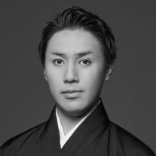
Fujima Naozo
Born in 1992 in Tokyo. A Fujima school of Japanese dancing instructor. Started learning Japanese traditional dance at the age of 6. Masters degree from the Tokyo University of the Arts, department of traditional Japanese music, Japanese dance study. Won the first place in 2012 Tokyo Shimbun whole country dancing contest Japanese classical dancing Part 1, the 2015 Minister of Education, Culture, Sports, Science and Technology prize, the prize for New Year dancing meet and the President Award. Appears in performances hosted by association of Japanese dance, and a lot of other stages. Also active in choreography and direction.
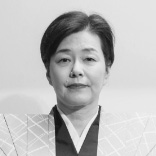
Takemoto Tomowaka
First stage in 1975. In 1996, became an apprentice to Tsuruzawa Tomoji (Living National Treasure), came to be known as Takemoto Tomowaka from the following year. In addition to performing at the Tokyo National Theatre and the National Entertainment Hall in Tokyo, has also participated in numerous overseas performances. Holds the "Gidayu-bushi (type of reciting used in the puppet theater) Workshop" at elementary and junior high schools, and Gidayu classes and Awajikai are held at Awa Jurobei Residence. Received the Ningyo Joruri Association Encouragement Award in 2002, and the Ningyo Joruri Chinami Association Women's Category Encouragement Award in 2009, and the Tokushima Arts and Culture Encouragement Award in 2017. Holder of important intangible cultural properties (general certification).
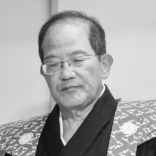
Takemoto Tomohiro
Since 1990, studied under Tsuruzawa Tomoji, a living national treasure of Gidayu-bushi and shamisen, and engaged in training. In 1994 and 1995, won consecutive championships in the Japan Championship for Amateur Gidayu and received the Ozeki Prize. Awarded the Higashi Ozeki Prize at the Awaji Amateur Gidayu Examination Committee in 2005, and was recommended as the 28th Yokozuna. Was in charge of the composition and the narration of the new written joruri by Setouchi Jakucho at the 2007 National Culture Festival Tokushima Tournament. Chairman of Tokushima Sogikai.
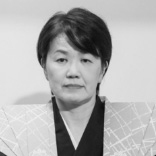
Tsuruzawa Tomoyu
In 1978, became an apprentice to Tsuruzawa Tomoji (a living national treasure), and joined the Awaji Ningyoza Theatre in 1985. Came to be known as Tsuruzawa Tomoyu. Has participated in numerous overseas performances. Has appeared in the National Theater, Kyoto University of Art and Design "Shunjuza," and the Women's Style Gidayu Concert sponsored by the Gidayu Preservation Society. In addition, holds Awajikai, "Gidayu-bushi Shamisen Workshop" for elementary and junior high schools, and teaches tayu (narrator in joruri) and shamisen at the Local Performing Arts Department of Minami Awaji City Mihara Junior High School. In 2000, received the Ningyo Joruri Chinami Association Encouragement Award, and in 2013 received the 33rd Pola Prize for Traditional Culture. Holder of important intangible cultural properties (general certification).
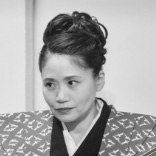
Tsuruzawa Tomosuke
Given the name Tsuruzawa Tomosuke by Tsuruzawa Tomoji, a living national treasure. At the National Culture Festival Tokushima 2007, composed and performed the new Ningyo Joruri "Yoshitsune Kaido Musume Koikyo" and "Moraes Koi Henro" written by Setouchi Jakucho. Also composed and played the "Heart of Awa" at the National Culture Festival in 2012, the first to held at the same place in Japan. Vigorously engages in performances outside the prefecture and overseas, receiving the Tokushima Cultural Association's Arts and Culture Encouragement Award in 2001 and the Awa Cultural Creation Award from Tokushima Prefecture in 2006.
![[音楽] 竹花加奈子(作曲・チェロ・ピアノ)](../img/img_2021_performer25.jpg)
Takehana Kanako
Started playing piano at the age of five and cello at the age of ten. After graduating from Toho Women's
High School department of music and Toho Gakuen University, studied abroad at Escola de Musica de
Barcelona. Currently, as a performer, appears in concerts, radio, various media in various places, and
also serves as a judge for international competitions. As a composer, composes and provides original songs
inspired by landscapes, memories, stories, traditional crafts, etc. Her 7th album "JAPONISME II", which
includes the cello sonata "The Tale of Taketori" and the piano sonata "Shiki", is a semi-recommended album
in "Record Art" magazine.
* In the movie, multiple songs are used from the sound scroll "Tale of Genji" recorded in "JAPONISMEII"
and the 8th album "JAPONISME III".



